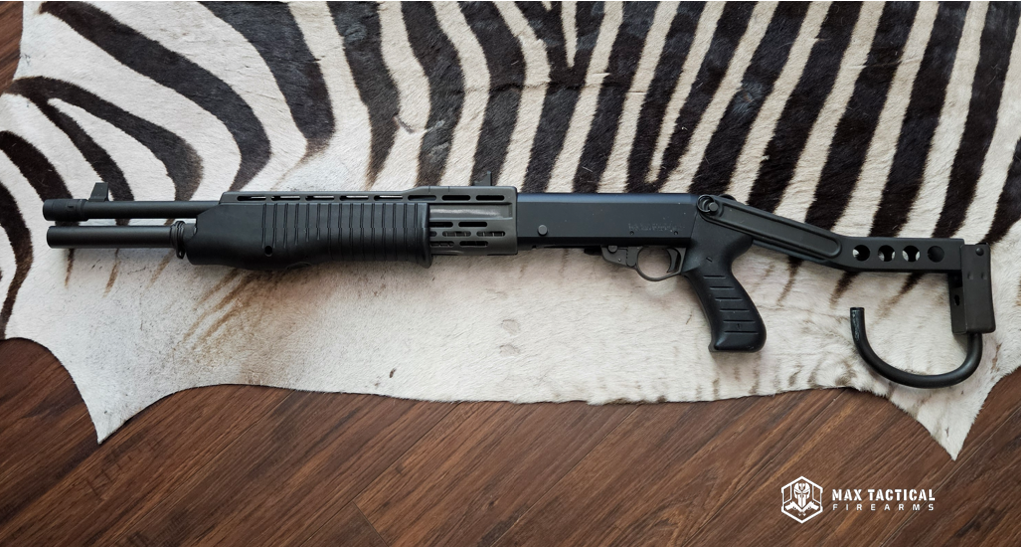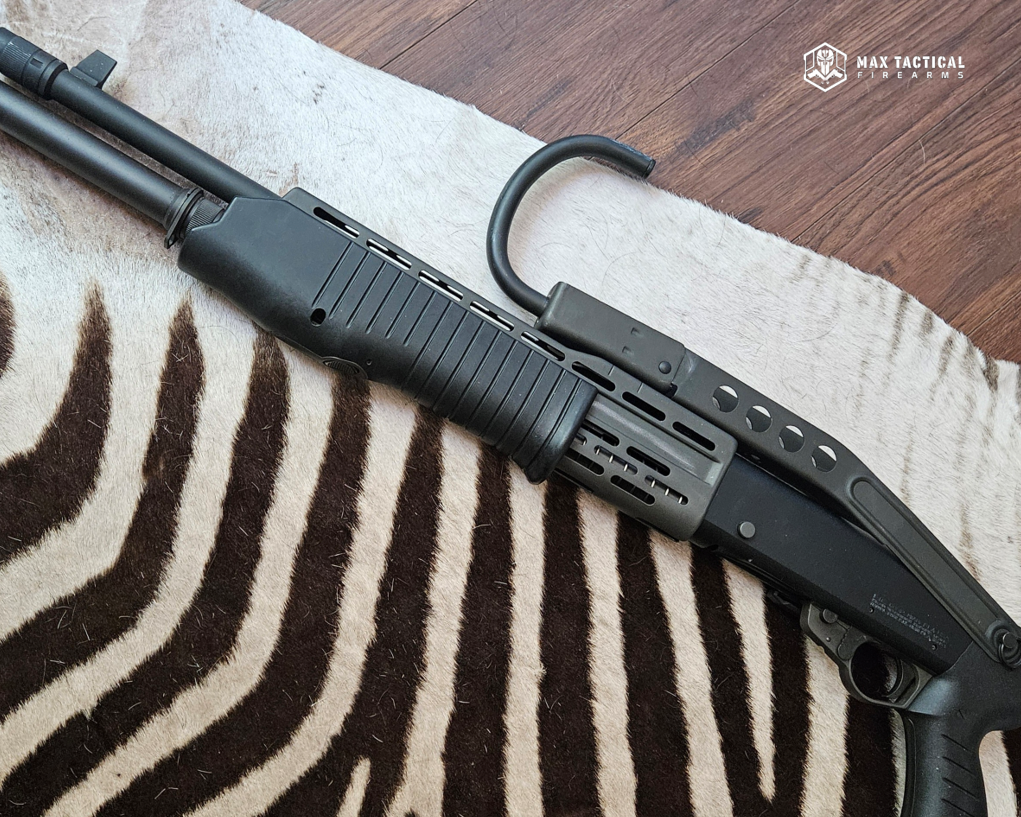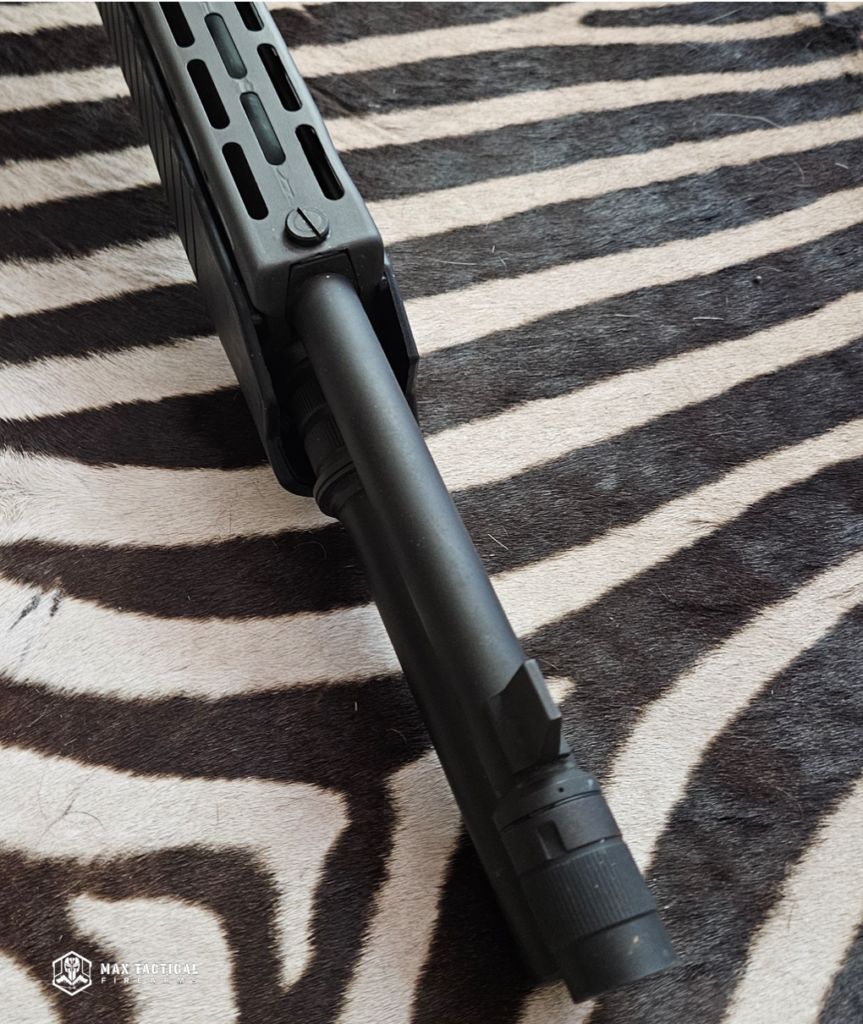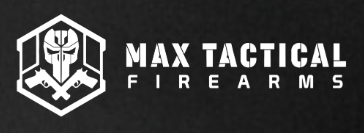
The SPAS-12 shotgun, with its rich history and significant value, stands as one of the most iconic firearms of its time. Known for its unique design and powerful performance, the SPAS-12’s history and value have only grown over the years, making it a prized collectible for enthusiasts.
SPAS-12 Photo Showcase: An Iconic Shotgun
Check out our video reel showcasing the SPAS-12 in action on Facebook and Instagram:
The SPAS-12 (Special Purpose Automatic Shotgun) was a combat shotgun manufactured by the Italian firearms company Franchi S.p.A. from 1979 to 2000. Initially designed as a law enforcement and military shotgun, the SPAS-12 became iconic due to its unique dual-mode action, allowing it to function as both a semi-automatic and pump-action shotgun. Its distinctive appearance, combined with a folding metal stock, heat shield, and overall aggressive design, contributed to its cult status among firearm enthusiasts, collectors, and Hollywood filmmakers alike.





The Design and Features of the SPAS-12
The SPAS-12 was unique in that it was one of the few shotguns designed with a dual-action mode, allowing the user to switch between semi-automatic and pump-action operation. The ability to cycle between these modes gave it a tactical advantage in specific scenarios. In semi-automatic mode, it could rapidly fire shells, while in pump-action mode, it could handle a broader range of ammunition, including lower-powered shells that might not cycle in a gas-operated system.
Some other notable features include:
- Pistol grip and folding stock – enhancing maneuverability.
- Heat shield – preventing burns from extended firing sessions.
- Extended magazine tube – allowing for a higher capacity.
- Robust build – made of high-quality steel for durability.
Due to its versatility and intimidating appearance, the SPAS-12 was marketed toward military, law enforcement, and civilian buyers, although it was ultimately restricted in many regions due to firearm regulations.
The SPAS-12 and the 1994 Assault Weapons Ban
In 1994, the United States Federal Assault Weapons Ban (AWB) was enacted under the Violent Crime Control and Law Enforcement Act (Public Law No. 103-322). This legislation restricted the sale and importation of certain firearms based on a set of cosmetic and functional features, rather than their actual operational capabilities. The SPAS-12, with its tactical appearance, pistol grip, and semi-automatic functionality, was classified as an “excessively lethal firearm” by proponents of the ban.
Critics of the law, including firearm experts and enthusiasts, pointed out that the SPAS-12 was mechanically similar to other commonly used semi-automatic and pump-action shotguns used for hunting, skeet shooting, and home defense. Despite this, the gun’s aggressive aesthetic led it to be vilified by gun-control advocates who often lacked technical knowledge about firearms (Koper, 2004).
This flawed logic exposed the major weaknesses of the ban. The legislation focused heavily on appearances rather than functionality, meaning firearms that operated identically to banned guns but looked different remained legal. The SPAS-12, for example, was essentially just a heavier, bulkier version of many legally available shotguns. The law failed to target criminal misuse of firearms, instead restricting law-abiding citizens from purchasing certain guns simply because they looked “scary.”
Further demonstrating its ineffectiveness, a 2004 study funded by the U.S. Department of Justice found that the Assault Weapons Ban had no measurable impact on gun violence during its ten-year enforcement (Koper, 2004). Even the Centers for Disease Control (CDC) conducted a meta-analysis and found “insufficient evidence” that banning certain firearms reduced crime rates (Hahn et al., 2005).
The sunset clause in the AWB ensured that the law would expire on September 13, 2004, unless renewed by Congress, which did not occur (Kleck, 2001). However, due to the ban’s restrictions on importation, shipments of the SPAS-12 to the United States ended in 1994, with Franchi ultimately ceasing production of the model in 2000.
Ironically, instead of reducing access to “dangerous weapons,” the ban fueled demand for firearms like the SPAS-12, driving up prices and making them more desirable to collectors. Today, the SPAS-12 remains a sought-after collectible, proving that cosmetic bans do little more than inconvenience lawful gun owners while failing to address actual crime.
The SPAS-12 in Popular Culture
The SPAS-12 gained legendary status not only among firearm collectors but also in Hollywood and video games. It was famously wielded by Arnold Schwarzenegger’s T-800 in The Terminator (1984), reinforcing its image as a formidable weapon. Additionally, Robert Muldoon, the game warden in Jurassic Park (1993), carried a SPAS-12 while facing off against velociraptors.
The gun also became a staple in the gaming world, appearing in franchises such as:
- Call of Duty
- Half-Life
- Counter-Strike
- Resident Evil
- Far Cry
- Battlefield
This widespread representation cemented the SPAS-12’s place in pop culture, making it one of the most recognizable shotguns ever produced. Many firearm enthusiasts consider the SPAS-12 to be a “grail gun”, meaning it is a highly desirable and rare firearm in the collecting community.
The Surging Value of the SPAS-12
The limited availability and cultural significance of the SPAS-12 have led to a massive increase in its market value. When the shotgun was still in production, its retail price in the United States was approximately $1,500 in its final year of availability.
By 2016, auction prices for the SPAS-12 had climbed to an average of $2,588 (Rock Island Auction, 2016). The value increase continued at an unprecedented rate, and by 2022, the price of an SPAS-12 at auction had skyrocketed to an average of $7,000.
As of 2025, the SPAS-12 remains one of the hottest collectibles in the firearms market, with some pristine examples exceeding $10,000 at auction. This dramatic price surge outpaces many other classic firearms and highlights the enduring demand for rare and historically significant tactical shotguns (Miller, 2023).
References
- Hahn, R. A., et al. (2005). Firearms laws and the reduction of violence: A systematic review. AJPM.
- Kleck, G. (2001). Targeting Guns: Firearms and Their Control. Aldine de Gruyter.
- Koper, C. S. (2004). Assessment of the federal assault weapons ban. NIJ Report.
- Rock Island Auction Company. (2016). Historical firearm auction results.
- Miller, J. (2023). The rising value of the SPAS-12. Firearms News.
—————————————————————–

Firearms 🔫 | NFAs 🧨 | Archery 🎯 | Hunting 🦅 | Accessories 🛠️ | Optics 🔭
Max Tactical Firearms, LLC is a licensed FFL and SOT dealer offering a broad range of products for beginners to expert firearms enthusiasts. With an extensive online store featuring over 40,000+ products from more than 500+ brands, you’ll find everything from firearms and archery to hunting, camping, survival gear, optics, and more. Max Tactical Firearms, LLC also specializes in NFA items, including suppressors, SBRs, and other Class III firearms, and they ship regulated orders to FFLs nationwide while also accepting transfers. Additionally, they offer custom heirloom-grade display cases and handcrafted leather goods built to last.
Note: Max Tactical Firearms, LLC ships nationwide, so you can browse the online store and place orders for shipping. If you are local, you can also contact them to schedule a pick-up, or transfer.
Questions? Need help?
Call: 623-980-3338
Email: [email protected]

